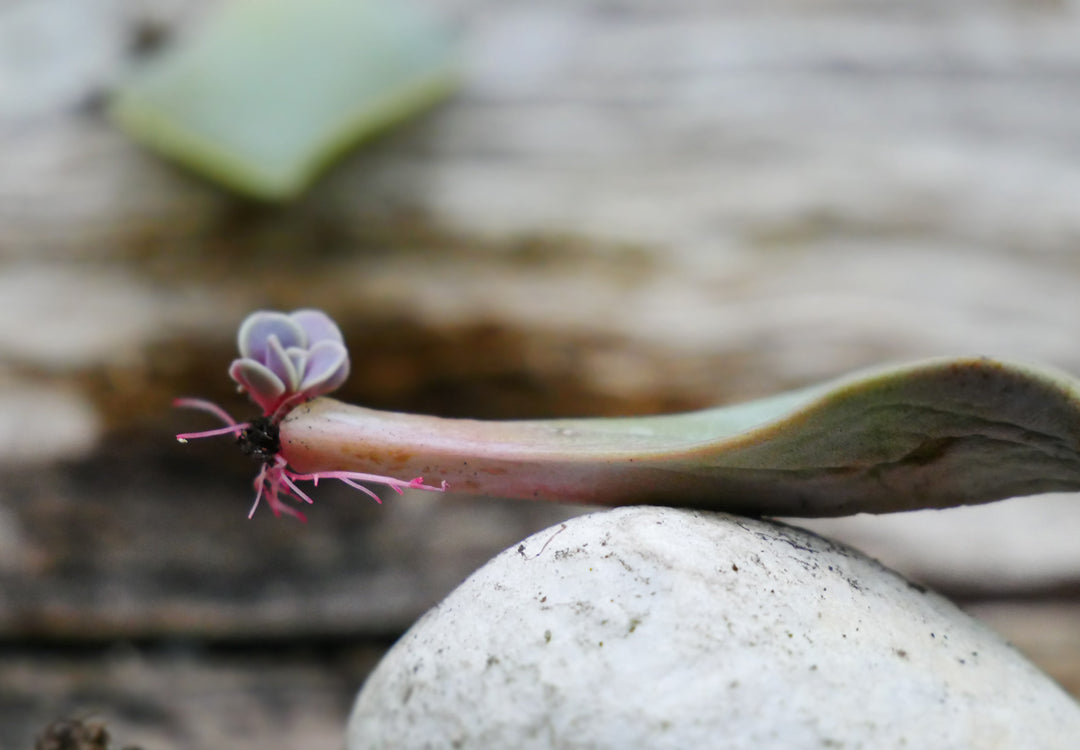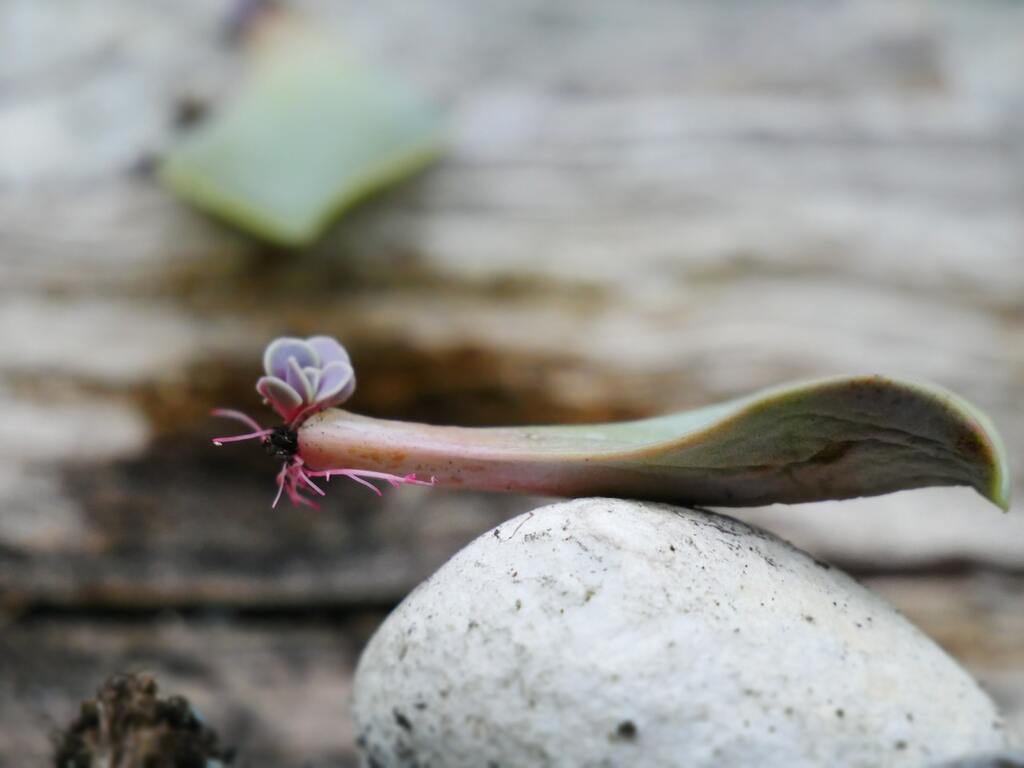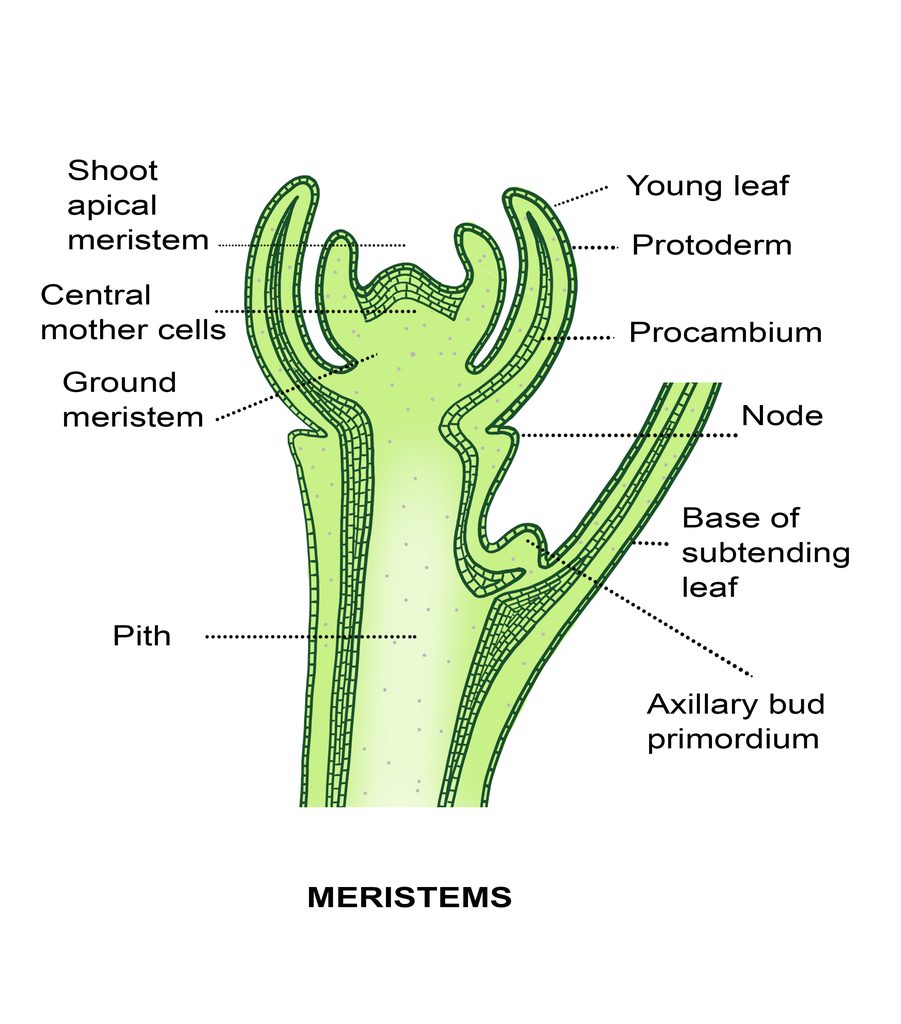
Meristematic tissue isn’t a term that’s usually thrown around by gardeners, however all plants do have this type of tissue and understanding its function helps us understand plants a little bit better.
Plants create new tissue through “meristematic” cells that are similar to stem cells found in animals. The “meristem” of a plant is made of undifferentiated (meristematic) cells that are able to divide and can become any plant tissue or organ they choose.
Once they’ve become a particular part of the plant however, there’s often no going back to being undifferentiated or going forward to create new cells. Once a stem cell has differentiated, it’s usually going to stay that way until it dies.

A succulent leaf with a clone growing from the meristem. Image source
There are three types of meristem: apical, lateral and intercalary.
1. Apical
This refers to the dividing cells exist on the very tip of a shoot or root. There are two types of apical meristems on a plant: SAM and RAM.
Shoot Apical Meristems (SAM) give rise to all above-ground organs including branches, leaves and flowers, while Root Apical Meristems (RAM) produce cells for root development.
2. Lateral
Occurring in dicots that have secondary growth, lateral meristems are also called cambiums and exist in rings within the plant branch or trunk. This type of growth thickens, rather than lengthens as apical meristems do.
The vascular cambium is a thin layer between the xylem and phloem that grows new vascular cells in both directions. The cork cambium is a layer that creates epidermal material like bark in some (not all) plants that .
The terms “lateral growth” and “secondary growth” are used interchangeably.
3.Intercalary
Some monocots, especially grasses, have a meristem at the base of the node and the leaf blade which can assist in faster elongation of the stem, leaf tissue creation, as well as damaged leaf repair.
Meristematic Structure
Apical meristems grow other meristems, like vascular cambium, as they build the branch by leaving a layered trail of differentiated and undifferentiated cells.
Because the cambiums and buds retain stem cells that never fully differentiate, there are always cells that are able to create new growth in any direction the plant needs.

Cross section showing the meristematic layer of cells in a dicot shoot. Diagram by Plants Grow Here.

The vascular cambium of a dicot looks like a ring in a cross section, and is made of meristematic tissue. Some shrubs and trees also have a cork cambium. Diagram via Plants Grow Here.
Monocots don’t have true lateral growth, although some monocots have intercalary meristematic tissue which dicots generally do not have. Any lateral growth on monocots is usually from each individual cell becoming larger, rather than division.
Apical Dominance
There is a phenomenon called “Apical Dominance” whereby plants can regulate the growth of branches by telling certain ones to keep growth down. This is useful for trees with a single trunk growing up high with a lot of lateral branches that need to be kept at a size that can be supported.
If the dominant apical meristem at the tip of the trunk is cut, usually an existing branch will assert itself as the new trunk and take over the role of dominant apical meristem.
Notice how some trees that have had the top of the trunk cut usually move and shift over the next few years to replace it with a single new leader. The branch moves to face upwards so that it is less obvious that it was not the original trunk.
Sometimes more than one branch assume dominance, leading to bushy growth. This can be the natural habit of the tree, as in large fig trees, or it can be the case through abnormal circumstances such as mal-pruning.
Conclusion
Plants can’t necessarily just grow new tissue wherever they want. It may seem like it, but branches don’t simply grow out of the bark of the tree.
They need undifferentiated meristematic tissue in order to grow new tissue.
